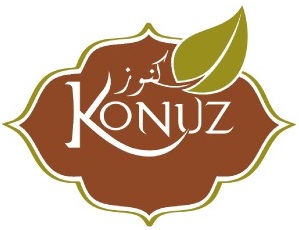Moroccan traditions are as varied as the North African kingdom itself. The country did not gain independence until 1956, but its distinctive culture has been sovereignly preserved over the centuries.
The Kingdom of Morocco is located in northern Africa. Only the Strait of Gibraltar separates it from Europe. The country lies on both the Mediterranean and the Atlantic. The name Morocco is based on a European corruption of the name of Marrakech. A city that is now on the national territory.
Moroccan traditions are mainly based on the Berber culture, who make up the main part of the kingdom’s population. Moroccan traditions stem mainly from agriculture. In addition to mining, it is still a pillar of the Moroccan economy today.
Konuz (online shop) brings Moroccan traditions to Europe with its products. For example, one of these Moroccan traditions is ghazoul. This clay has served the Berbers for centuries as a natural cosmetic product that they use to cleanse their skin and hair.
In this context one must also mention the valley of the roses. It is located in the High Atlas around the city of Kelaat M’Gouna. The beguiling scent of the countless rose petals now also beguiles many tourists. A typical Moroccan tradition is to use this high-quality natural product both as a fragrance oil and as an addition to rose water for special washes. The use of rose water at weddings is typically Moroccan. Here, all guests are sprayed with rose water to greet them. This custom is part of every Moroccan wedding.
Moroccan traditions are particularly favored by the Mediterranean climate. North of the Atlas Mountains, the vegetation is mainly influenced by the Mediterranean. That is why prickly pears also thrive in the north of the country. The Berbers use the prickly pear fruit in traditional cuisine. An extremely high-quality oil has been pressed from the kernels of the fruit since ancient times. This oil, which is also available from Konuz, is primarily used as a natural moisturizer with wrinkle-reducing properties.
Morocco is a very hospitable country. Traditionally, guests are greeted with milk and dates. This custom is also observed at typical Moroccan weddings. Here it is the task of the groom’s mother to receive the guests with milk and dates.
The Maghreb kingdom is shaped by Islam. Moroccan traditions are therefore more influenced by the Orient than by Africa. The hamam is typical of this culture. This steam bath is not only used for cleansing, but also for the care of the body. Moroccan traditions when visiting the hammam are, for example, using a black henna soap. It is applied all over the body. According to Moroccan traditions, ghazoul is also used for hair and skin for the perfect peeling.
After visiting the steam bath, Moroccans cook a typical mint tea for themselves. Old Moroccan tradition is also a special food on Friday, which is after all the most important day of the week in Islam. Most families eat couscous with seven kinds of vegetables and meat that day. This dish symbolizes joy and love.
Moroccan traditions are mainly based on natural products. One such are the wax wind lights decorated with oriental patterns that are offered by Konuz. According to Moroccan traditions, the lanterns are poured and hollowed out by hand. The patterns or replicas are also applied by hand.

